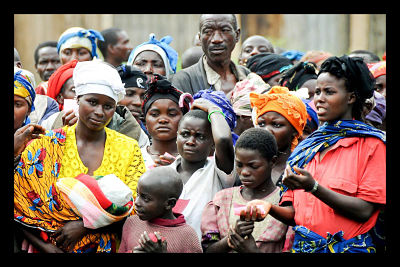Conflict and Poverty in Eastern Congo

In spite of its massive natural resource endowments, the Democratic Republic of the Congo remains one of the poorest countries on earth, with a GDP per capita of just $194. This is in no small part due to a conflict that has been raging – at various levels of intensity – since the early 1990s. As a result, more than 5.4 million Congolese have died and over 2 million have been displaced. Widespread sexual violence and the use of child soldiers have deeply scarred communities and left them with little to no economic development. The ongoing instability and poverty in the eastern part of the country poses a threat not only to Congo’s development and stability, but also to that of its Central African neighbors.
Intercommunal hatred based on years of conflict, competition among armed groups over natural resources, and regional power struggles have fueled the instability in the region. The largest armed groups include the Rwandan Hutu militia FDLR, the M23 militia backed by Rwanda and Uganda, collections of “Mai Mai” militias, and the Congolese Army. The Lord’s Resistance Army (LRA) has also been known to operate in eastern Congo.
In addition, conflict minerals, notably gold, tin, tungsten, and tantalum, utilized in most consumer electronic products, are mined in eastern Congo. Due to worldwide demand for such products, the minerals offer massive spoils to any armed group able to control the mines. This has led to greater violence as groups fight one another over access to minerals.
The weak institutions and lack of government in the region have only encouraged conflict by allowing war criminals to act with impunity. And without a strict hierarchy or accountability measures, the Congolese military effectively acts as a large gang. Corrupt police forces and judiciaries also partake in violence or turn a blind eye to war crimes and human rights abuses.
Human and economic development in eastern Congo has been entirely derailed by the conflict. Sexual violence has both physically and psychologically harmed women and left them unable to care for themselves or their families. Similarly, the use of child soldiers has devastated communities by raising death tolls and making parents unable to protect their children from harm. A lack of trust between neighboring villages and communities has also eroded development and entrenched poverty by promoting isolation and discouraging trade.
In response to the ongoing crisis, the UN has provided the largest and most expensive peacekeeping operation in the world, MONUSCO, with 20,000 personnel and an annual budget of $1.4 billion. Celebrities such as Ben Affleck have called attention to the dire situation, and USAID has begun a Community Recovery and Livelihoods Project to address victims of sexual violence and the conflict minerals industry.
– David E Wilson
Sources: Enough Project, Eastern Congo Initiative, International Crisis Group
Photo: World Vision Australia
